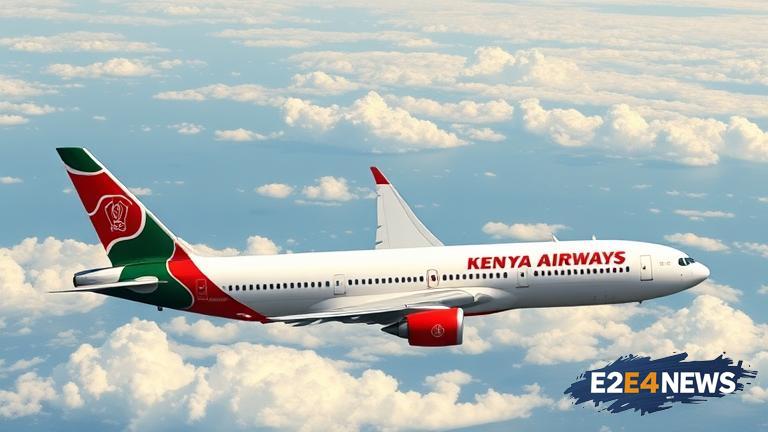Kenya Airways, the national carrier of Kenya, has reported a staggering net loss of KSH 12 billion, sparking concerns about the airline’s financial stability. The loss is attributed to various factors, including increased competition, high operating costs, and a decline in passenger demand. Despite the challenges, the airline has announced plans to restore its fleet, which is expected to improve its operational efficiency and competitiveness. The fleet restoration efforts are part of the airline’s strategic plan to revamp its operations and return to profitability. Kenya Airways has been facing financial difficulties in recent years, and the latest loss is a significant setback for the airline. The airline’s management has attributed the loss to the COVID-19 pandemic, which has had a devastating impact on the aviation industry. The pandemic has led to a decline in air travel demand, resulting in reduced revenues for the airline. Additionally, the airline has faced increased competition from other carriers, which has further eroded its market share. The high operating costs, including fuel prices and maintenance expenses, have also contributed to the airline’s financial woes. To mitigate the losses, Kenya Airways has implemented various cost-cutting measures, including reducing staff and renegotiating contracts with suppliers. The airline has also explored alternative revenue streams, such as cargo transport and charter services. Despite these efforts, the airline’s financial performance remains a concern, and the latest loss has raised questions about its long-term viability. The Kenyan government, which owns a significant stake in the airline, has pledged to support the carrier’s recovery efforts. The government has announced plans to inject additional capital into the airline to help stabilize its finances. The airline’s management has also expressed confidence in its ability to turn around the business, citing the success of its fleet restoration efforts. The restoration of the fleet is expected to improve the airline’s operational efficiency, reduce maintenance costs, and enhance the overall passenger experience. The airline has also invested in new technology, including a modernized booking system and mobile app, to improve customer engagement and loyalty. Furthermore, Kenya Airways has expanded its route network, adding new destinations and increasing frequencies on existing routes. The airline has also strengthened its partnerships with other carriers, including codeshare agreements and interline partnerships. These efforts are expected to improve the airline’s competitiveness and attract new customers. However, the airline still faces significant challenges, including intense competition and high operating costs. To overcome these challenges, the airline will need to continue to innovate and adapt to changing market conditions. The airline’s management has acknowledged the need for continued investment in its operations and has pledged to explore new revenue streams and cost-cutting measures. In conclusion, Kenya Airways’ reported net loss of KSH 12 billion is a significant concern, but the airline’s fleet restoration efforts and strategic plan to revamp its operations offer hope for a turnaround. With the support of the Kenyan government and the airline’s management, Kenya Airways can overcome its financial challenges and return to profitability.
